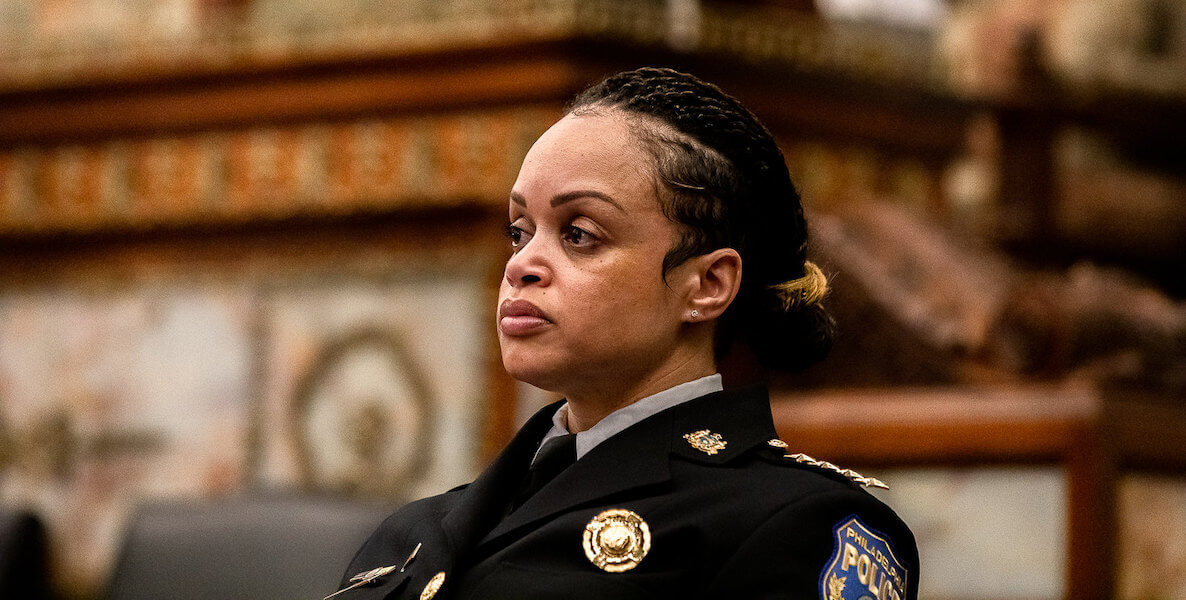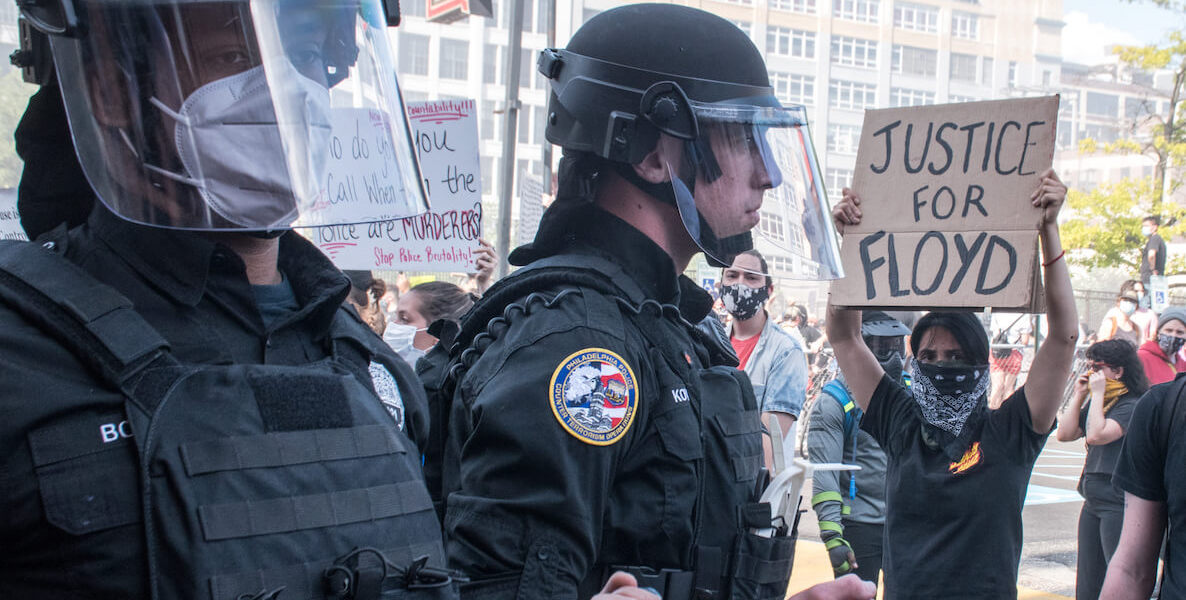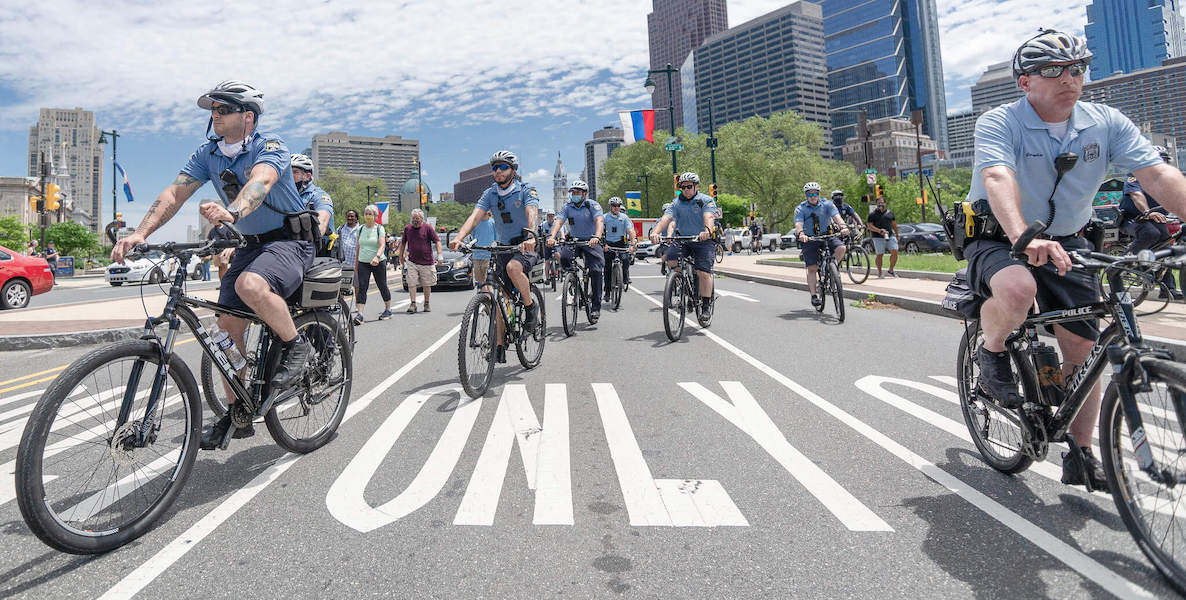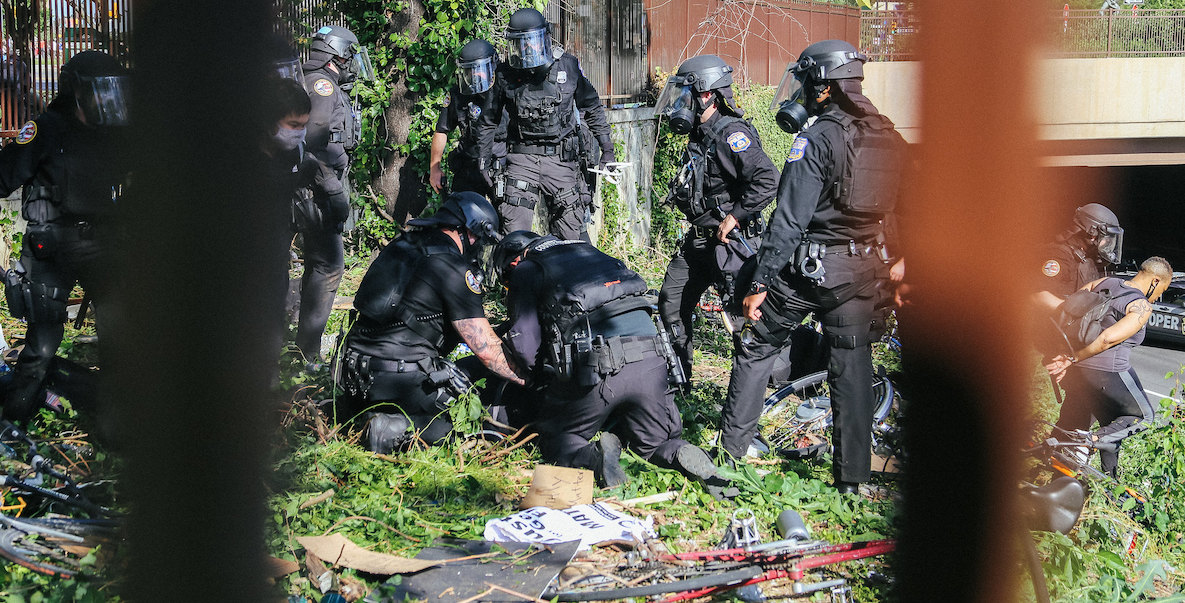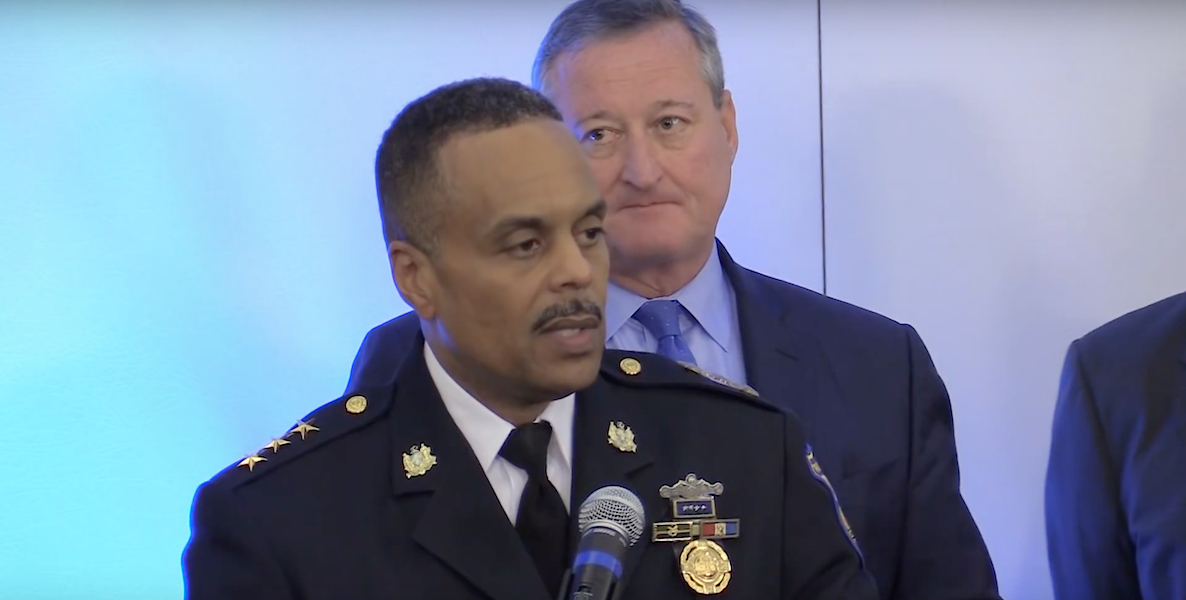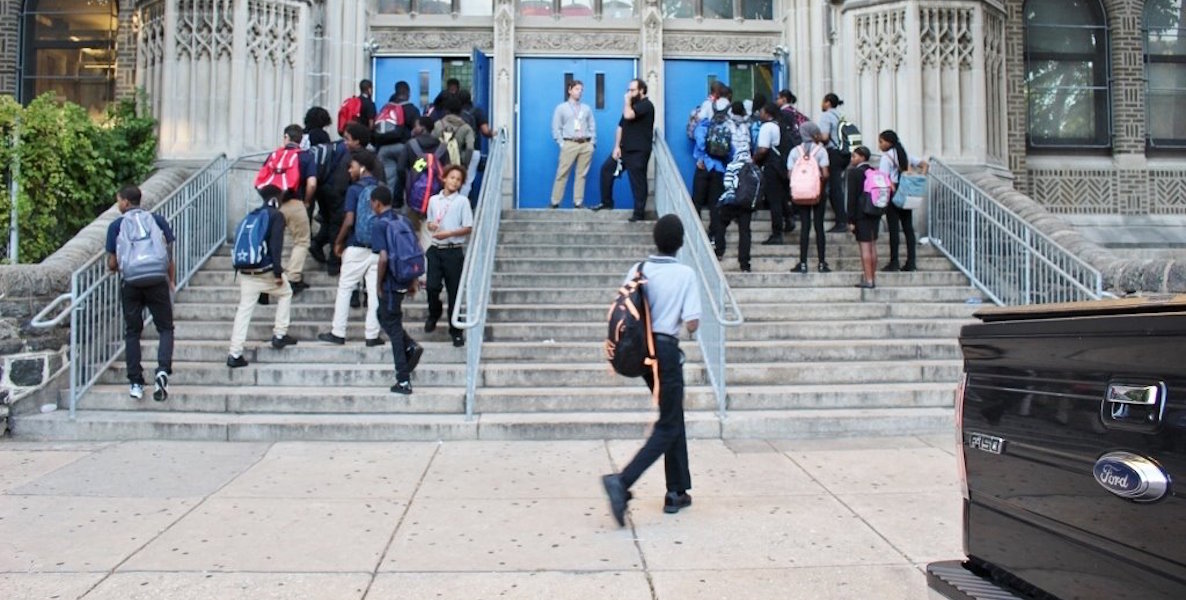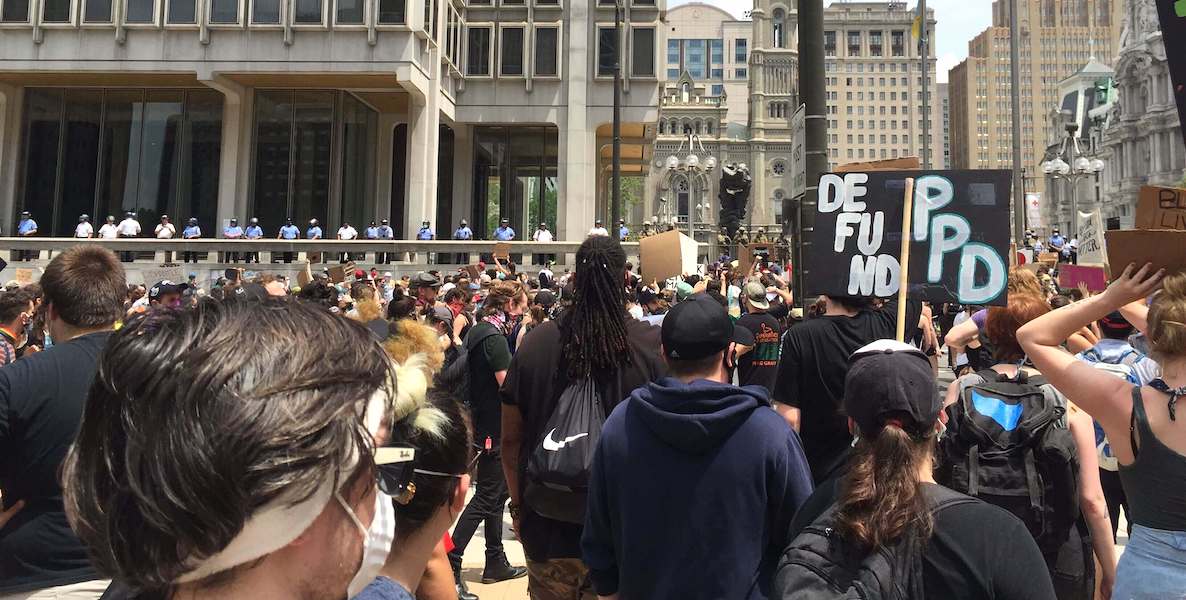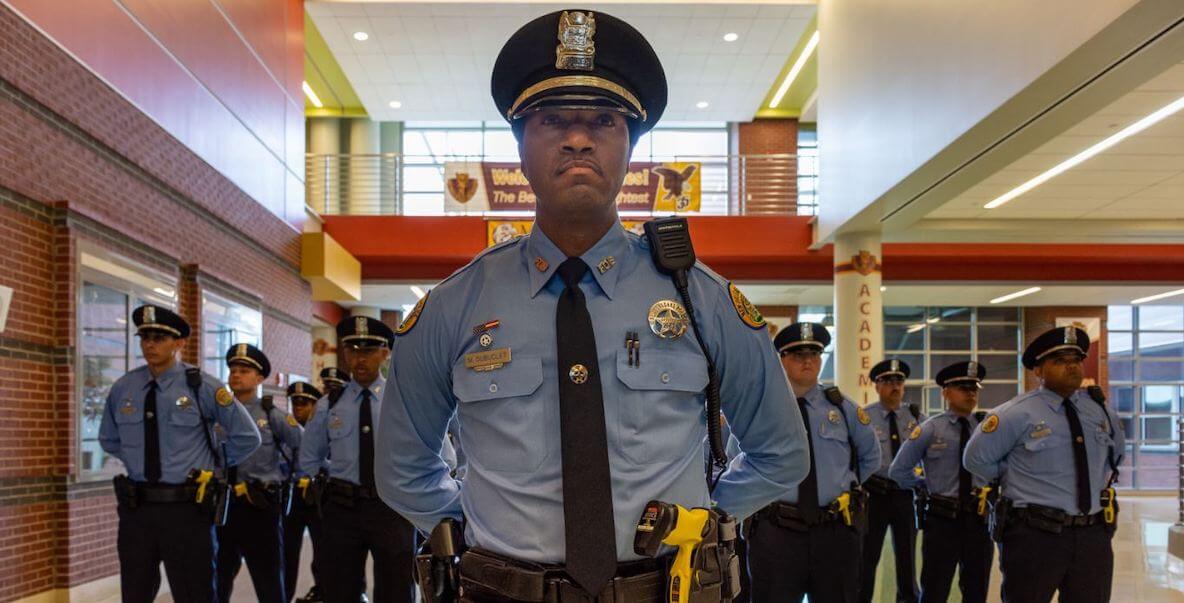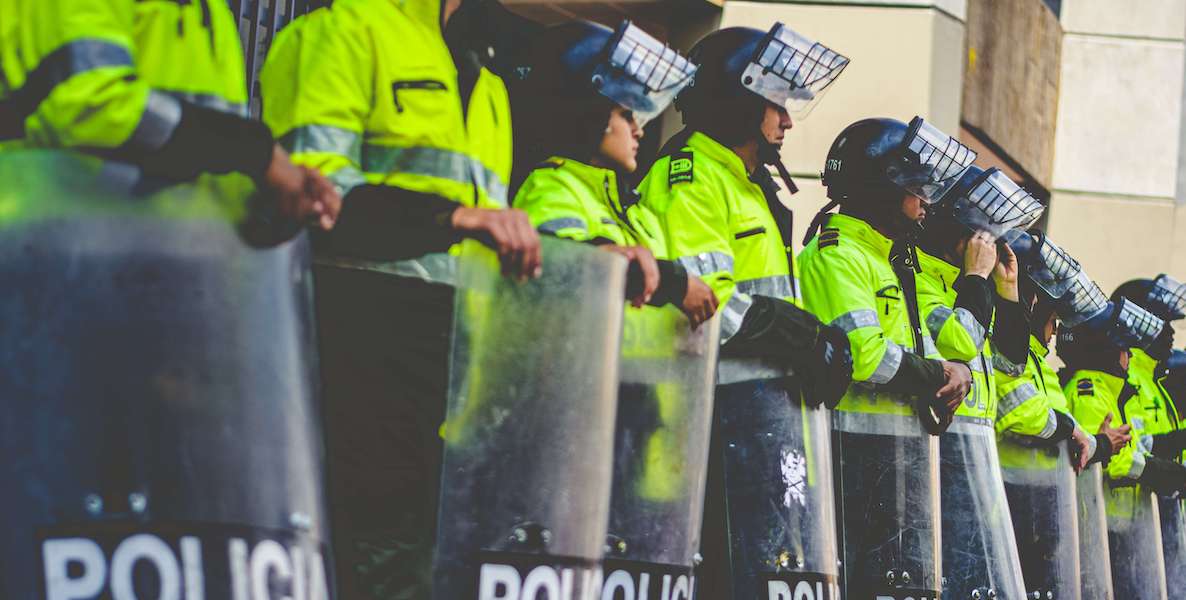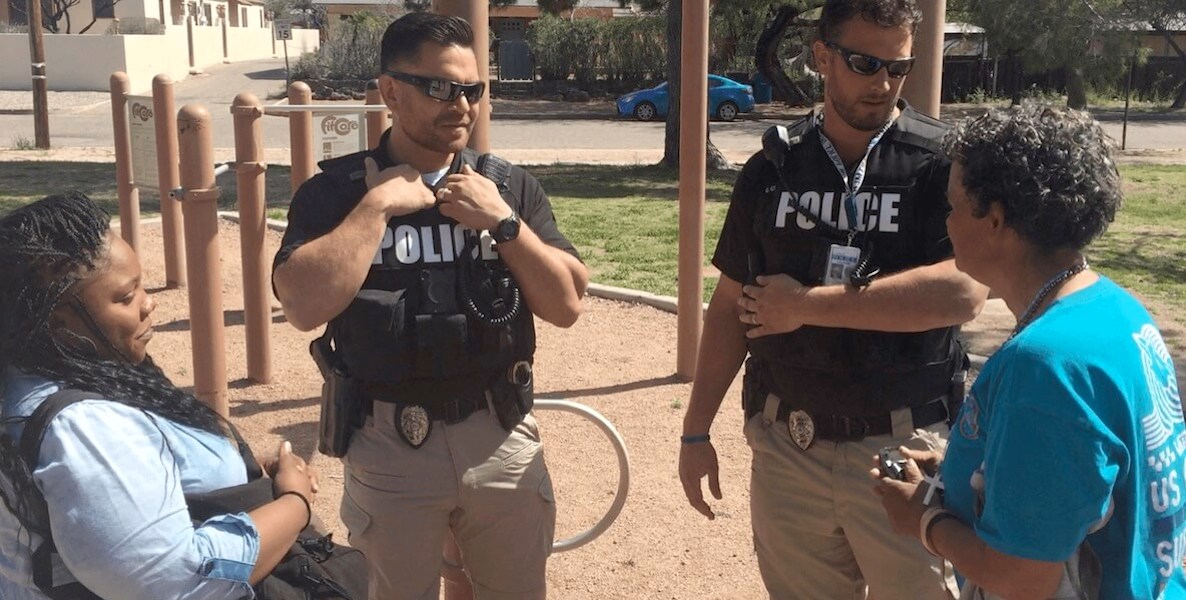![]() It was another week of grief and heartbreak in the city, in reaction to Monday’s killing by police of 27-year-old Walter Wallace Jr., in West Philadelphia. Wallace was reportedly having a mental-health crisis when police were called to the scene.
It was another week of grief and heartbreak in the city, in reaction to Monday’s killing by police of 27-year-old Walter Wallace Jr., in West Philadelphia. Wallace was reportedly having a mental-health crisis when police were called to the scene.
Today, Americans with mental-health issues make up roughly one-fourth of the people who are killed by police officers. Meanwhile, two million Americans with mental illness end up in jail every year. And yet in emergencies involving individuals in psychiatric distress, it’s still very often the police who are called in.
Philadelphia Police Chief Danielle Outlaw has since said that a mental health professional was not in the dispatch room on Monday when the 911 call came in, though efforts are underway to make that the norm.
Now, as the streets overflow with outrage and pain and the media scrambles to report on the daily finger-pointing, here’s a look at the solutions some communities around the world have adopted to arrive at more humane policing.
Embracing a “Guardian” Mentality | Scotland and Volusia County, Florida
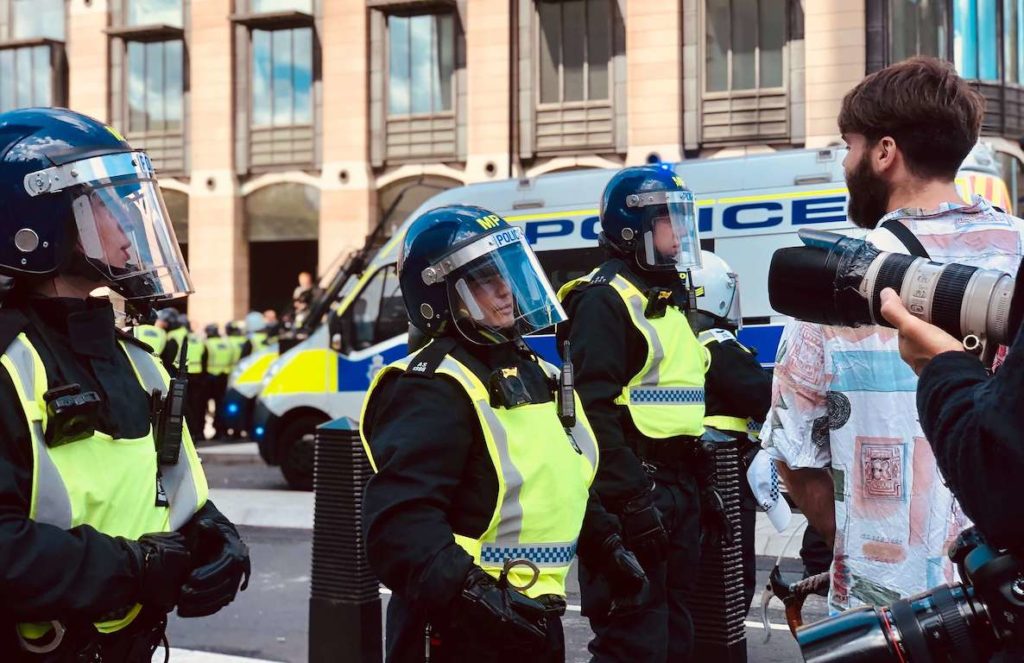
As The Citizen has previously reported, in Scotland, except for a small special force, police don’t even carry firearms.
“When someone has a knife in the U.K., the immediate reaction of a constable is to step back. In the U.S, the first thing an officer will do is pull out his gun and aim it at the person,” explains Chuck Wexler, Executive Director at Police Executive Research Forum (PERF).
![]() “When they recruit in Scotland, they’re not looking for the best shooter, who can do the most pushups, who can run the fastest mile-and-a half. They’re looking at who has critical-thinking ability,” says Volusia County, FL, Sheriff Mike Chitwood, an 18-year veteran of the Philly Police Department (which he joined in the footsteps of his dad, Mike Chitwood Sr., the most decorated officer in Philadelphia history). “The model is based on ethics, values, proportionality and sanctity of human life.” That, he says, is what really stayed with him as he built his team in Florida. So, too, did the results of a national survey showing that 94 percent of Scottish citizens have confidence in their police department.
“When they recruit in Scotland, they’re not looking for the best shooter, who can do the most pushups, who can run the fastest mile-and-a half. They’re looking at who has critical-thinking ability,” says Volusia County, FL, Sheriff Mike Chitwood, an 18-year veteran of the Philly Police Department (which he joined in the footsteps of his dad, Mike Chitwood Sr., the most decorated officer in Philadelphia history). “The model is based on ethics, values, proportionality and sanctity of human life.” That, he says, is what really stayed with him as he built his team in Florida. So, too, did the results of a national survey showing that 94 percent of Scottish citizens have confidence in their police department.
“Police should have a guardian mentality, not a warrior mentality,” Chitwood says. PERF delineates the difference: a focus on “community policing, crime prevention, and high standards of professionalism in policing” versus “high-power weaponry and use of force.”
Re-Thinking Who Should Respond | Eugene, Oregon
Eugene, OR, introduced CAHOOTS—Crisis Assistant Helping Out On The Streets—in 1989 to incorporate mental health support for emergencies involving mental illness, homelessness, and addiction. In those cases, the CAHOOTS team dispatches two-person teams consisting of a medic (a nurse, paramedic, or EMT) and a crisis worker who has substantial training and experience in the mental health field.
CAHOOTS experts, who are not law enforcement officers and do not carry weapons, are trained in conflict resolution, welfare checks, substance abuse, suicide threats, and more, and rely on trauma-informed de-escalation and harm reduction techniques.
Americans with mental-health issues make up roughly one-fourth of the people who are killed by police officers. Meanwhile, two million Americans with mental illness end up in jail every year.
According to the CAHOOTS team, who—unsurprisingly, encouragingly—has been inundated with calls and shared their latest stats via email, team members complete over 500 hours of training that emphasizes de-escalation and crisis intervention to resolve situations where a social service response is more appropriate than a police response.
Last year CAHOOTS handled more than 24,000 calls—about 17 percent of the calls dispatched by 911; CAHOOTS teams called for police backup just 250 times.
And they’ve shown the financial benefit of their program, too: CAHOOTS has saved an estimated average of $8.M on public safety and $14M for ambulance/emergency room treatment—annually.
Following CAHOOTS’ Lead | San Francisco, California
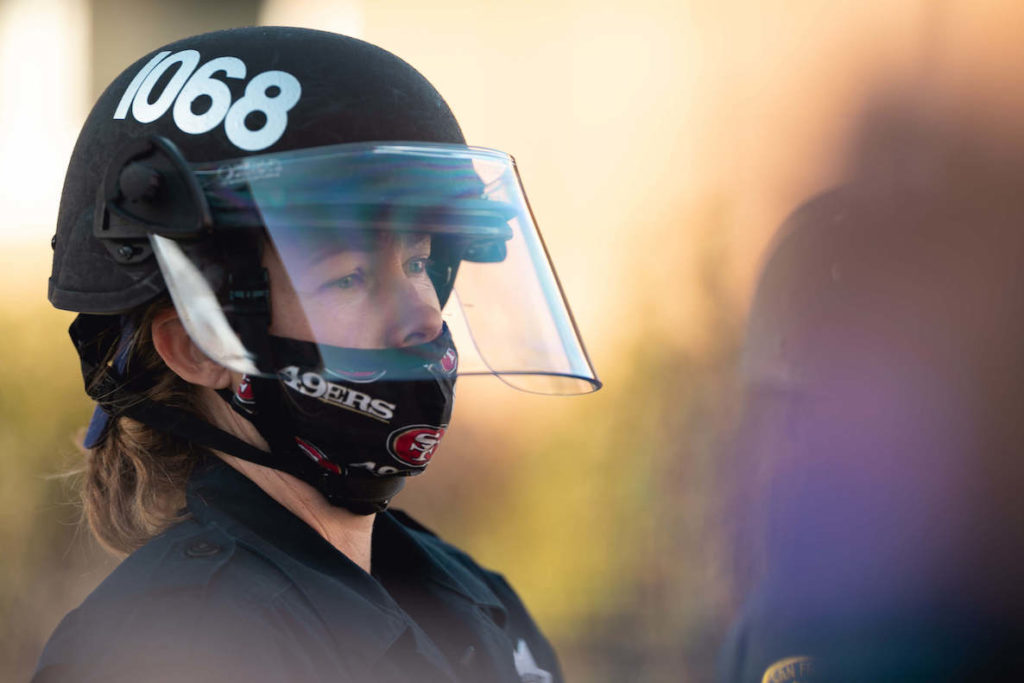
Starting next month in San Francisco, it’ll be the fire and health departments who will take the lead in responding to calls for people experiencing a mental or behavioral health crisis, as well as substance abuse emergencies. The first responders will include unarmed teams made up of paramedics, mental-health experts and peer support counselors.
![]() NPR has called the plan, which will begin next month, the “largest and boldest urban police reform experience in decades”—though smaller pilots of this sort exist elsewhere. (San Francisco’s model, NPR reported, is actually based on CAHOOTS.)
NPR has called the plan, which will begin next month, the “largest and boldest urban police reform experience in decades”—though smaller pilots of this sort exist elsewhere. (San Francisco’s model, NPR reported, is actually based on CAHOOTS.)
According to the San Francisco Examiner, S.F.’s mayor proposed $17 million to fund four teams over two years: The plan estimates that it will reroute some 20,000 calls away from the police, who field 300,000 calls a year.
Investing in Infrastructure | Tucson, Arizona
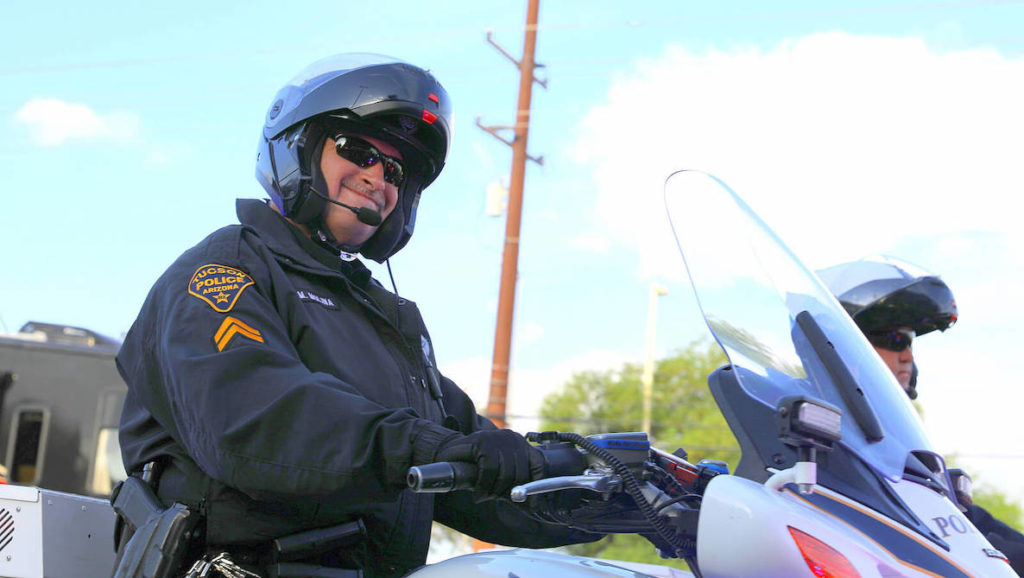
Out in Tucson, Arizona, the city has a one-of-its-kind, four-tiered approach to incorporating behavioral health into its practices. Tucson’s reforms, under the leadership of Chief Chris Magnus and Assistant Chief Kevin Hall, whom we wrote about in August, are particularly unique in their comprehensiveness.
Here’s how their programs work:
At the most basic level, everyone in the department goes through a 12-hour mental health first aid class. Then there’s a 40-hour crisis intervention training (CIT)—it’s voluntary, and extremely popular: 80 percent of their patrol have gone through it, and there’s a waitlist to take the course.
Where things start to get really interesting is with Tucson’s third level, a Mental Health Support Team (MHST, pronounced “mist”), which is made up of detectives and sergeants who go through even more extensive training for handling court-mandated petitions for mental health evaluations, the historically undesirable process of picking up someone who’s considered to be a danger to themselves or others.
Typically, Magnus explains, those orders are just handed out to patrol personnel, and people would not want to go along with the officers who came to retrieve them: They’d barricade themselves in their homes, start physical struggles. “You’d basically drag somebody to the ER and wait hours for them to get a mental health professional to process them, and it was just a nightmare,” Magnus admits.
![]() Now, in Tucson, MHST officers go out in semi-plain clothes—a polo shirt that says Tucson Police—and demonstrate the patience and communication skills in which they’re trained to get people to come along with them on a voluntary basis. Officers also know when to hit pause and simply come back another time.
Now, in Tucson, MHST officers go out in semi-plain clothes—a polo shirt that says Tucson Police—and demonstrate the patience and communication skills in which they’re trained to get people to come along with them on a voluntary basis. Officers also know when to hit pause and simply come back another time.
The city also has non-police mobile crisis teams, funded through the state’s regional behavioral health authority, which rely on having mental health clinicians respond if officers call them to do follow-up at a scene or be sent out when officers might not be needed.
And, most extraordinarily, they have a 24/7 Crisis Response Center (CRC) which, as timing would have it, had begun being built in 2009 but officially opened its doors the wake of the shooting of Gabby Giffords and community members.
“That was a horrific ordeal. But the community said This is unacceptable, what do we do? There was a recognition that there needed to be a place where people could be taken that would be really responsive to folks experiencing a mental health or emotional crisis,” Magnus says.
Tucson’s strategy is an acknowledgment that cities cannot arrest their way out of many of the problems they face.
The CRC facility is an environment that’s humane and decent for people needing care. “The philosophy of the CRC is no wrong door—in other words, you can bring somebody in who might be high, who might be really drunk, it doesn’t matter. You can bring them in and the team will get them to the right place,” Magnus says.
The CRC was created through a taxpayer-approved bond project in Pima County, which created the funds to build the facility and establish the CRC. Year-to-year funding comes from the Regional Behavioral Health Authority (RBHA) and multiple other sources; services are billed to insurance providers, and services to uninsured citizens are billed to Arizona Complete Health (as a Medicaid expansion state, uninsured client costs are paid through the state).
In effect, Tucson’s strategy is an acknowledgment that cities cannot arrest their way out of many of the problems they face. “There are circumstances and people who need to go to jail, nobody’s denying that,” Magnus says. “But there are a lot of cases where jail should not be the default option, just because you don’t have any other resources or you don’t know other strategies that might work.”
Understanding History to Avoid Repeating It | Germany
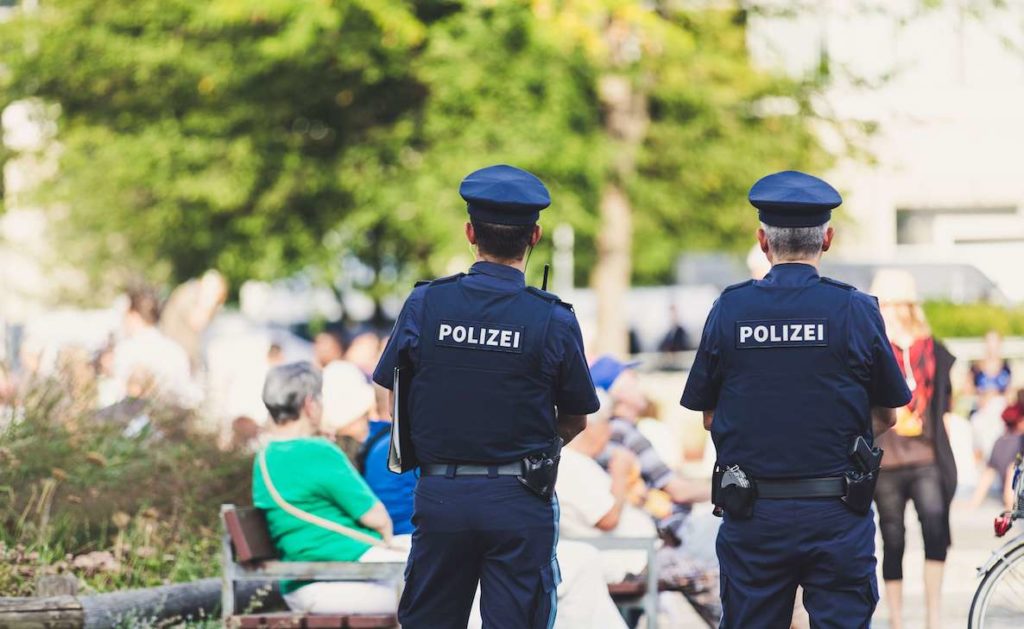
Imagine if every police officer in America underwent not just basic bias-training, but extensive coursework looking at the history and ethics of policing in the U.S., institutional racism, the legacy of slavery, the complex roots of poverty.
Well, that holistic, intellectual approach underlies Germany’s federal police force, where, according to a recent New York Times article, “officers are required to pass a rigorous multi-year curriculum with history and Germany’s liberal democratic constitution at its core. The bedrock of public safety in Germany is a strategy of communication and de-escalation.” Cadets, the article goes on, are not only instructed on handling a gun but required to take classes in law, ethics and police history. Officers also take two annual trips to Israel and its Holocaust memorial, Yad Vashem.
This method of training dates back to post-World War II efforts to demilitarize the police, and ensure that by understanding history, it wouldn’t be repeated.
Now, Berlin’s attorney general, who formerly ran the Berlin police force, told The Times, “Violence is frowned upon. […] Even drawing a gun can lead to a police officer requesting psychological support.”
Header photo by Ricardo Arce / Unsplash



